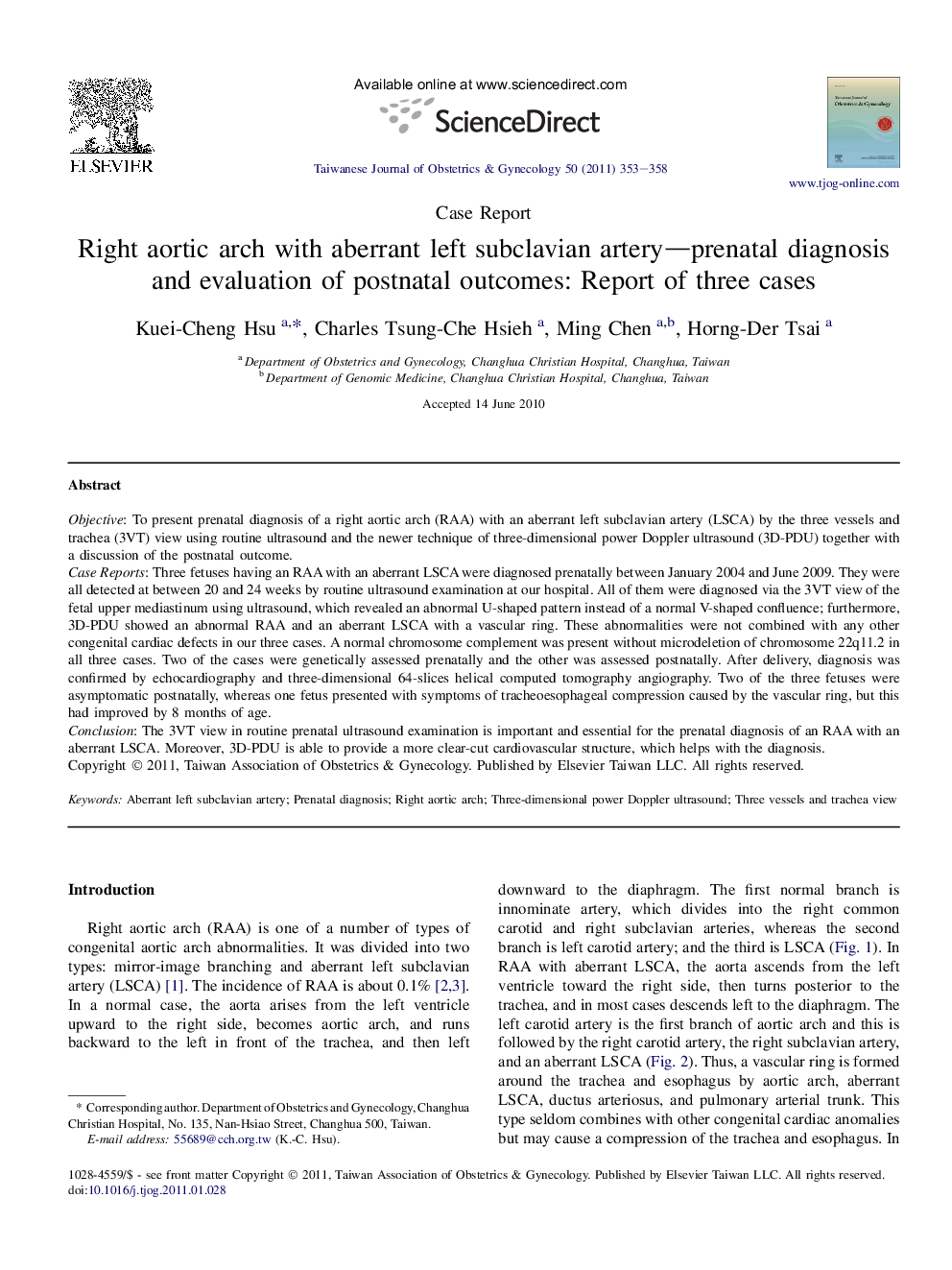| Article ID | Journal | Published Year | Pages | File Type |
|---|---|---|---|---|
| 3975765 | Taiwanese Journal of Obstetrics and Gynecology | 2011 | 6 Pages |
ObjectiveTo present prenatal diagnosis of a right aortic arch (RAA) with an aberrant left subclavian artery (LSCA) by the three vessels and trachea (3VT) view using routine ultrasound and the newer technique of three-dimensional power Doppler ultrasound (3D-PDU) together with a discussion of the postnatal outcome.Case ReportsThree fetuses having an RAA with an aberrant LSCA were diagnosed prenatally between January 2004 and June 2009. They were all detected at between 20 and 24 weeks by routine ultrasound examination at our hospital. All of them were diagnosed via the 3VT view of the fetal upper mediastinum using ultrasound, which revealed an abnormal U-shaped pattern instead of a normal V-shaped confluence; furthermore, 3D-PDU showed an abnormal RAA and an aberrant LSCA with a vascular ring. These abnormalities were not combined with any other congenital cardiac defects in our three cases. A normal chromosome complement was present without microdeletion of chromosome 22q11.2 in all three cases. Two of the cases were genetically assessed prenatally and the other was assessed postnatally. After delivery, diagnosis was confirmed by echocardiography and three-dimensional 64-slices helical computed tomography angiography. Two of the three fetuses were asymptomatic postnatally, whereas one fetus presented with symptoms of tracheoesophageal compression caused by the vascular ring, but this had improved by 8 months of age.ConclusionThe 3VT view in routine prenatal ultrasound examination is important and essential for the prenatal diagnosis of an RAA with an aberrant LSCA. Moreover, 3D-PDU is able to provide a more clear-cut cardiovascular structure, which helps with the diagnosis.
